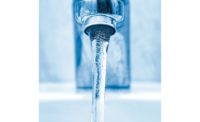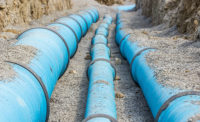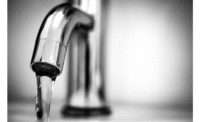There is no safe level of lead in drinking water.
With this in mind, eliminating lead exposure via drinking water has been an incessant goal for regulatory agencies for several decades. Lead poisoning disproportionally affects pregnant women, infants and children because developing nervous systems are more susceptible to damage from lead exposure, causing issues including reduced IQ, learning disabilities, aggression and other behavioral problems. For this reason, significant focus has been placed on reducing lead levels in drinking water in schools and daycares. While much attention is paid to lead service line replacement, another significant area of focus for lead remediation programs has been to limit lead extraction from endpoint devices — those devices present in the last liter of a drinking water system such as faucets, flex connectors and stop valves.
The United States Environmental Protection Agency’s (U.S. EPA) widely used “3Ts for Reducing Lead in Drinking Water in Schools and Child Care Facilities” manual provides guidance for schools and childcare facilities for identifying and remediating sources of lead exposure in their plumbing systems. The manual recommends lead remediation actions for any fixture where the lead concentration exceeds 20 µg/L. However, there is growing concern that this trigger level may be insufficiently protective, and many local and state testing programs have set trigger concentrations of 15 µg, 10 µg or lower.
More recently, in 2016, the American Academy of Pediatrics issued a recommendation that state and local governments take steps to ensure that water supplies in schools and childcare facilities do not exceed lead concentrations of 1 µg/L. Partially in response to this recommendation, in February 2020, a bill was introduced to the California State Assembly (AB 2060: Holden) which would limit the amount of lead that could leach from any faucet sold in the state of California. This bill was ultimately held up in the Senate Appropriations Committee, but a similar bill (AB 100: Holden) was reintroduced earlier this year and was signed by the governor in October.
Additionally, the current draft of the long-awaited Lead and Copper Rule Revisions (LCRR) would for the first time require community water systems to conduct lead and copper sampling in the schools and childcare facilities they serve, and to provide the results and information about potential lead remediation actions to the school or childcare facility. Replacement of outdated, high lead fixtures is likely to be a common recommendation for lead remediation, creating a need for schools and childcare facilities to be able to identify and purchase fixtures leaching the lowest amounts of lead possible.
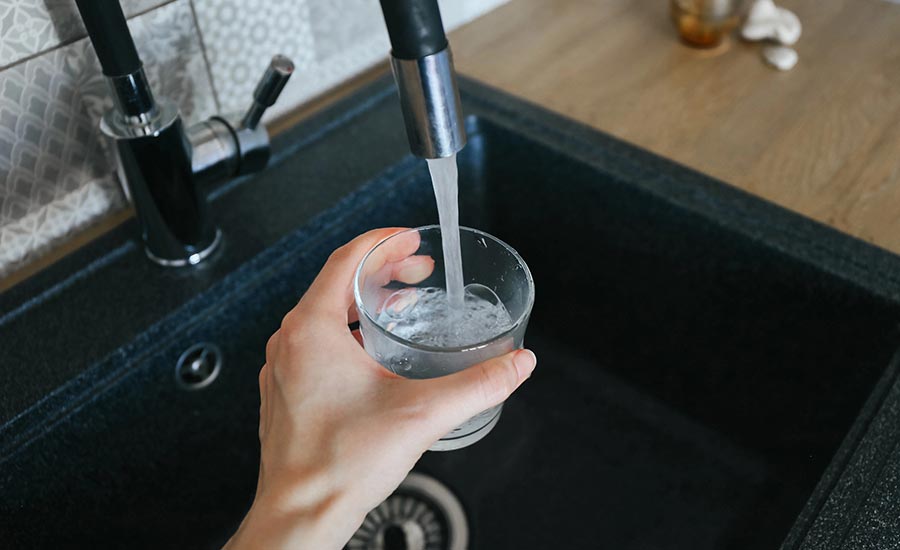
The Q statistic
The North American consensus standard governing health effects requirements for faucets and other endpoint devices is NSF/ANSI/CAN 61: Drinking Water System Components-Health Effects, Section 9. The standard evaluates the dose of lead released from faucets and other endpoint devices using a statistical calculation known as the Q statistic. The Q is a statistical representation of the average dose of lead (in µg) that may leach from an endpoint device following overnight dwells during the first few weeks of product use. The statistic represents a 90% confidence level that 75% of all units from a product line would have a lead dosage of less than or equal to the Q value calculated. The standard originally allowed a lead dosage of 11 µg when it was first published in 1994, and in 2012, the criteria were lowered to the current limits of 5 µg for faucets and endpoint devices, and 3 µg for supply stops, flexible plumbing connectors and components.
Recognizing the need for schools, childcare facilities and other end-users to be able to purchase even lower lead emitting devices in the marketplace, the Drinking Water Additives Joint Committee that oversees NSF/ANSI/CAN 61 sought to revise the standard requirements for endpoint devices to better align with current public health and regulatory guidance. The committee, comprised of experts in public health, the plumbing industry, and user groups, ultimately approved a revision to the standard that reduced the Q criteria from 5 µg for faucets and other endpoint devices and 3 µg for supply stops, flexible plumbing connectors and components to 1 µg and 0.5 µg, respectively.
The revision was subsequently approved by the Council of Public Health Consultants (CPHC) and published in the 2020 edition of NSF/ANSI/CAN 61. The revision allows device manufacturers to certify their products to the new, more stringent requirements on an optional basis until Jan. 1, 2024. Products evaluated to the lowered criteria must indicate their compliance on consumer-facing product packaging or labeling, as well as in the certification listing for the product with a statement denoting “NSF/ANSI/CAN 61: Q < 1” or “NSF/ANSI/CAN 61: Q < 0.5” as applicable. This labeling requirement allows for easy identification of lower lead emitting products by the end-user.
On Jan. 1, 2024, compliance to the reduced Q criteria for lead will become a mandatory requirement for all products certified under NSF/ANSI/CAN 61, Section 9. After this date, any products that do not comply with the new 1 µg or 0.5 µg criteria will no longer be eligible for certification under the standard, and will not be entitled to bear the NSF 61 certification mark. This phased approach for implementing the new criteria allows for compliant products to be made available on the marketplace as soon as they are available, while allowing sufficient time for product manufacturers to redesign, retest and recertify their entire product lines as necessary to comply with the new criteria before they become mandatory.
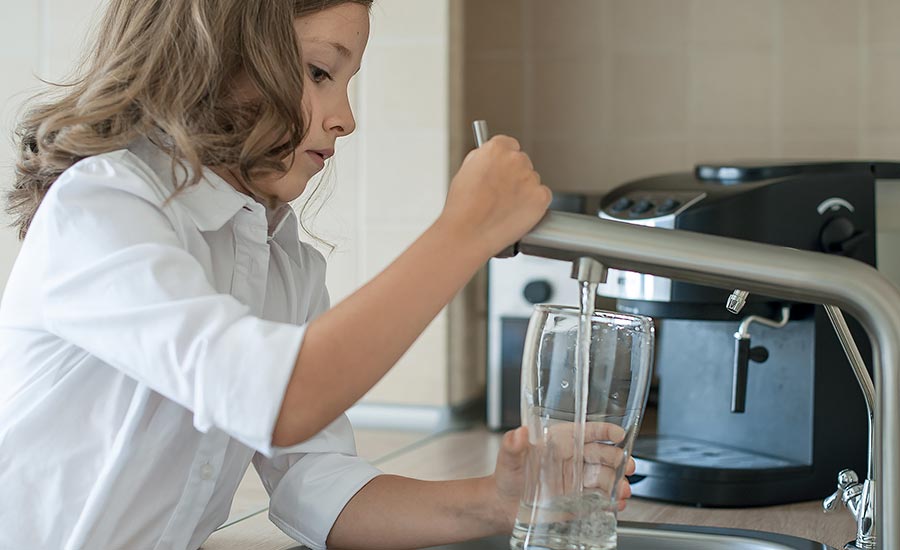
The reduction in allowable lead leaching under NSF/ANSI/CAN 61, Section 9 coincides with several regulatory efforts intended to reduce lead exposure from drinking water that are likely to go into effect in the near future. California Assembly Bill AB 100 (Holden) would restrict the amount of lead leaching from faucets and fixtures to a Q of 1 µg. Under the current version of the bill, all products manufactured on or after Jan. 1, 2023 would be required to comply with the reduced Q requirements in the 2020 version of NSF/ANSI/CAN 61, and by July 1, 2023, all products introduced into commerce in the state would be required to meet the new requirement. The bill recently passed the senate appropriations committee, and at the time of writing, was set for a vote with the full senate. If approved by the Senate and reconciled with the House bill, the bill would then be ready for signature by the Governor.
If the bill passes, this would accelerate the timeline by which endpoint devices intended for sale in the State of California would need to comply with the reduced criteria in NSF/ANSI/CAN 61: 2020.
Meanwhile, the U.S. EPA has extended the effective date of the Lead and Copper Rule revisions (LCRR) to Dec. 16, 2021 (with an extended compliance deadline of Oct. 16, 2024) in order to give additional time for stakeholder review of the draft revisions. Although neither of these regulatory actions are final, the focus on reducing lead exposure in water systems and endpoint devices will only become more intense in the coming years. The reduction to the Q criteria in NSF/ANSI/CAN 61 anticipates this effort, making it easier to find endpoint devices that comply with stringent lead leaching criteria in the marketplace.
This latest reduction in the lead extraction criteria for endpoint devices under NSF/ANSI/CAN 61 exemplifies the ability of the consensus standard system to keep drinking water standards relevant to the most current thinking in public health, science and manufacturing best practices. This update reflects the hard work of industry, public health officials and local and state governments working together toward the common goal of getting the lead out of drinking water and protecting the most vulnerable among us from its harmful effects.
For additional information about the reduced Q criteria for lead in NSF/ANSI/CAN 61, or for a better understanding of how NSF International can help in the evaluation of endpoint devices to the new requirements, please contact us at kfoster@nsf.org.
The current draft of the long-awaited Lead and Copper Rule Revisions (LCRR) would for the first time require community water systems to conduct lead and copper sampling in the schools and childcare facilities they serve, and to provide the results and information about potential lead remediation actions to the school or childcare facility.
Recognizing the need for schools, childcare facilities and other end-users to be able to purchase even lower lead emitting devices in the marketplace, the Drinking Water Additives Joint Committee that oversees NSF/ANSI/CAN 61 sought to revise the standard requirements for endpoint devices to better align with current public health and regulatory guidance.
Under the current version of the bill, all products manufactured on or after Jan. 1, 2023 would be required to comply with the reduced Q requirements in the 2020 version of NSF/ANSI/CAN 61, and by July 1, 2023, all products introduced into commerce in the state would be required to meet the new requirement.

